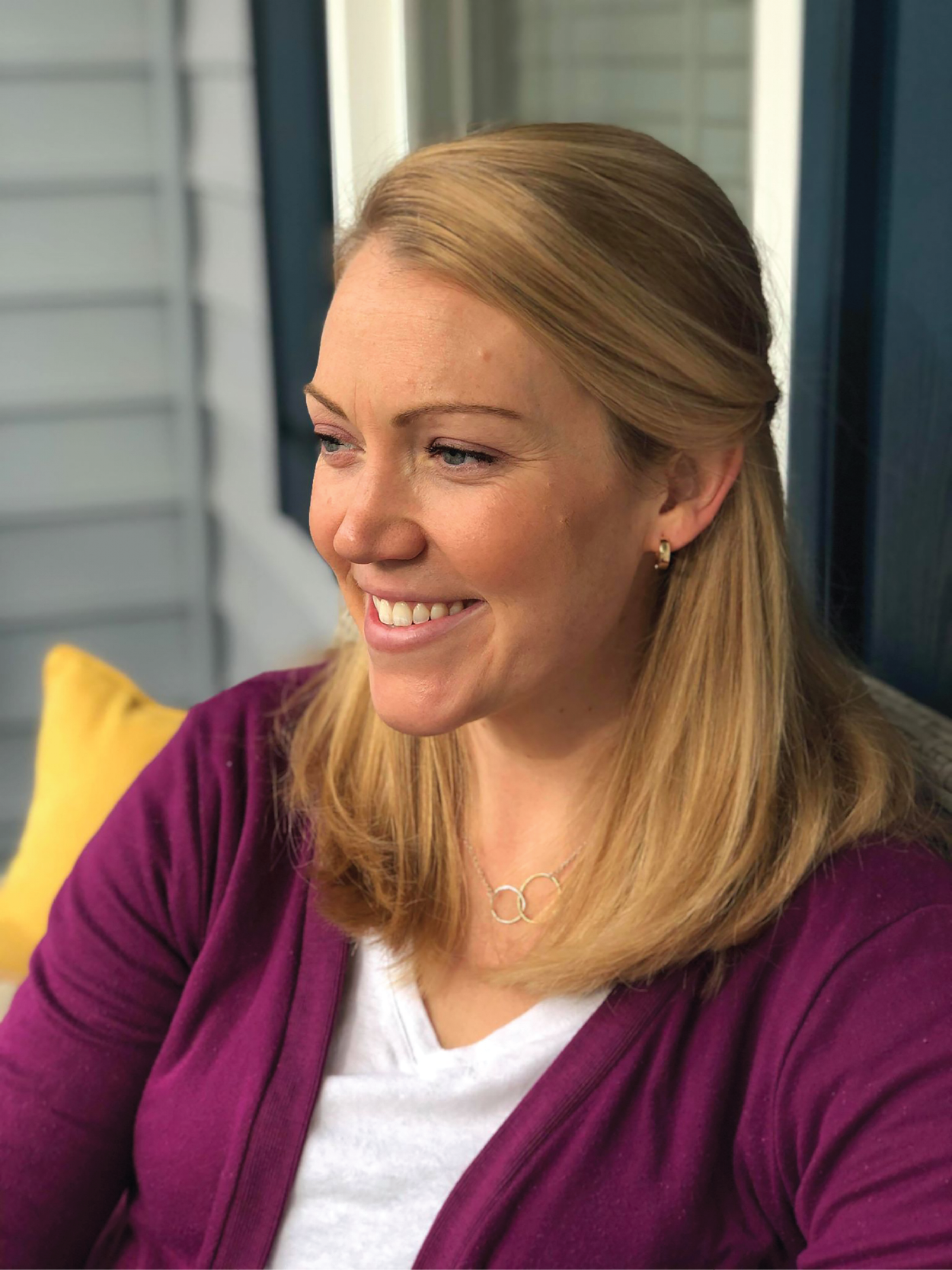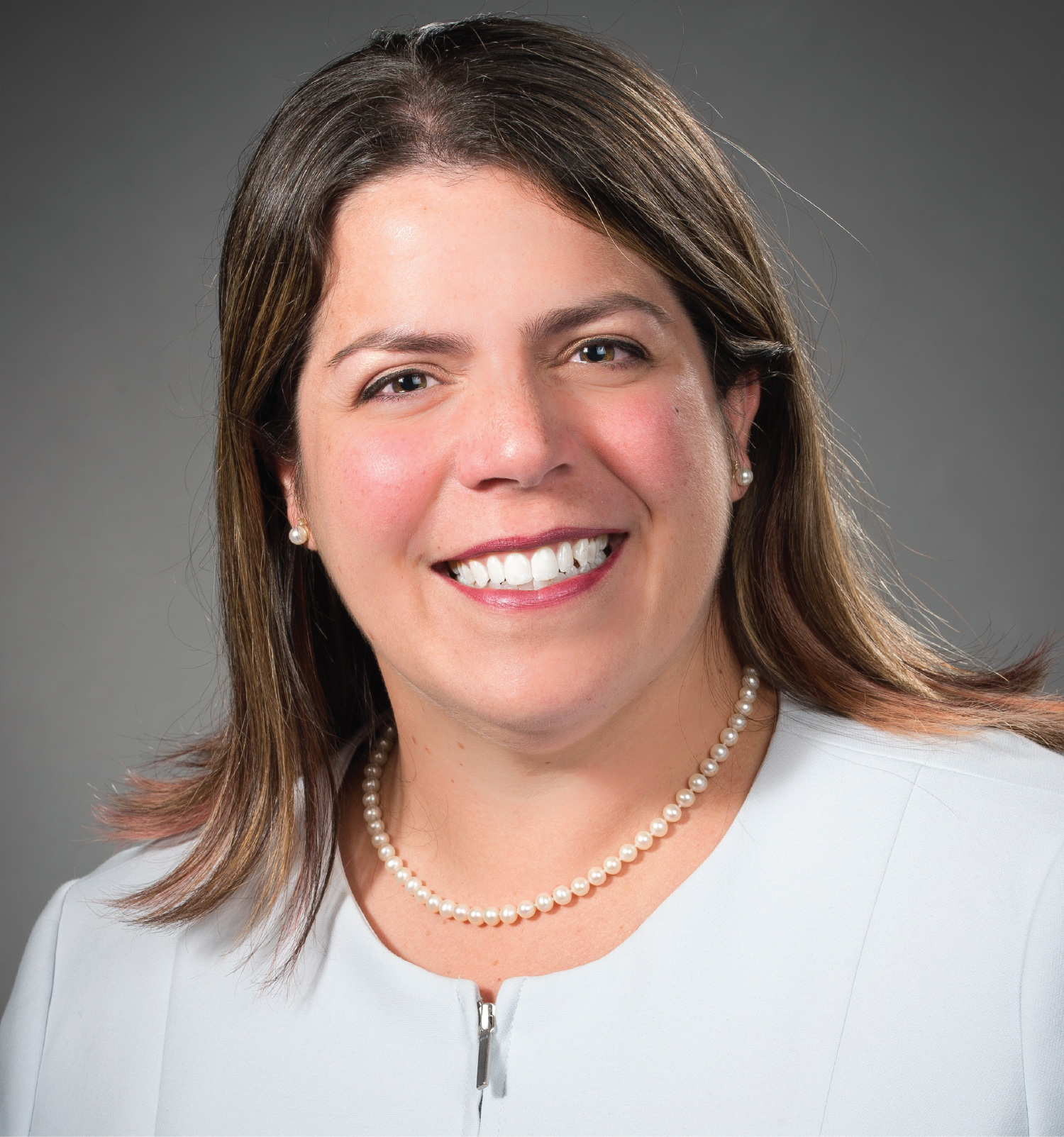Amanda Bumgarner knows about babies. As a pediatric nurse in Richmond, VA, she’s spent her working life consoling sleep-deprived parents, administering shots to screaming infants, and tenderly attending to the needs of fragile premature babies, often in the most heartbreaking and dire circumstances. When she gave birth to a little girl of her own, she wasn’t expecting any surprises but two weeks into motherhood, she knew something wasn’t right. At first, it was the tears—she couldn’t get through a single day without crying. Then it was the debilitating anxiety—the overwhelming panic that once overcame her when her best friend, herself a mother and infant nurse, held her baby. She recognized that her feelings were far from rational. “How do you turn those things off?” she wondered, far too often. Breastfeeding was also a problem. “My daughter wouldn’t latch without just destroying me,” she said. “I was feeling like a failure, because this is supposed to be the most natural thing ever.”
By the time Bumgarner’s family convinced her to go to therapy, she was severely exhausted and anxious. At the doctor’s office, she was asked to fill out a questionnaire to evaluate her rank on the Edinburgh Postnatal Depression Scale (EPDS), a standard evaluation for new mothers six weeks after giving birth [5]. “It’s a very vague questionnaire,” she said, requiring the mother to rate statements like, “I have looked forward with enjoyment to things,” or, “I have felt sad or miserable,” according to how frequently she experienced those feelings in the previous week. Nonetheless, her responses were significant enough to warrant a diagnosis. Bumgarner (Figure 1) was experiencing postpartum depression, an oft-debilitating condition annually affecting as many as half a million mothers in the United States alone [7].
Different from “baby blues,” a mild depression that affects the majority of new mothers in the first few weeks after giving birth, postpartum depression, a perinatal mood and anxiety disorder (PMAD), can last for months, and even up to a year. At a minimum, symptoms are often categorized as generalized anxiety, sadness, irritability, loss of appetite, and tearfulness, but in the most extreme cases, mothers can become suicidal, and even infanticidal [1].

A recent study of 300 maternal deaths within a year after delivery found that suicide was the seventh-leading cause of maternal death [2]. Though PMADs overwhelmingly affect women with a history of depression or anxiety, they are indiscriminate, affecting mothers with no prior history whatsoever [7]. And not treating it is consequential. A growing body of evidence is showing that a lack of treatment puts children at greater risk for displaying lower cognitive performance and social intelligence, developing learning disorders later in life, and even developing psychiatric illness in adulthood [1].

And yet, PMADs are woefully understudied, underdiagnosed, and thus, poorly treated. However, over the last decade new research has been shedding light on this sometimes-devastating condition, and one remarkable new treatment in particular is bringing much-needed hope to suffering mothers [3].
Difficulties with diagnostics
Like most psychiatric disorders, PMADs are often difficult to diagnose. That’s because the tools for measuring abnormalities in brain activity are not as straightforward as something like bloodwork, according to Peter Schmidt, Behavioral Endocrinology Branch chief and principal investigator for the National Institute of Mental Health (NIMH) Intramural Research Program (Figure 2). That means doctors must rely on secondary and indirect measures such as the EPDS form Bumgarner filled out in her doctor’s office. Due to the lack of a biological diagnostic tool, the definition of most PMADs in the Diagnostic and Statistical Manual of Mental Disorders (DSM), the standard diagnostic manual for diagnosing psychiatric disorders, are nonspecific at best. While “it’s acknowledged that there may be an association between the postpartum, or the peri-partum (around the time of birth), and risks for depression, it doesn’t have a distinct set of clinical symptoms,” said Schmidt, though many doctors argue there are distinct clinical presentations in postpartum depression like anxiety and obsessive ruminations. “And when people are not sure if the condition exists, there’s not a lot of incentive for people to do studies,” said Schmidt, and that slows down the development of new treatments.
But that’s all changing, noted Kristina Deligiannidis, a reproductive psychiatrist and the director of Women’s Behavioral Health at Zucker Hillside Hospital in Queens, NY (Figure 3). “There’s been an explosion of research in reproductive psychiatry,” she said, and now PMADs are at least included in the psychiatric diagnosis repertoire. Ten years ago, they were missing completely. “Now there’s a language, there’s research, there’s a definition,” she added, and that sets forth a whole movement of research. Currently, reproductive psychiatry isn’t standard in medical training for OBGYNs and psychiatrists.
“We think all psychiatrists need this training, and at least some training should be standard for OBGYNs,” she said, because ultimately the lack of education can harm women. Currently, it is not uncommon for a pregnant woman on medication for depression to be told by her doctor that taking those medications is not safe. “Unfortunately many physicians are not up-to-date on data supporting that clinical decision,” she said, “so we want to increase education to reduce misinformation.”


Treatment
The first line of treatment for PMADs is talk therapy, and for some women, that’s all they need. Bethany Vanderbilt, a licensed clinical social worker at the Center for Attachment & Trauma Services in Springfield, Virginia, specializes in perinatal mental health challenges, particularly PMADs (Figure 4). Drawn to the field by her own experience with postpartum anxiety, another form of PMAD, following the birth of her first child, she understands the value of having someone to talk to. In many cases, she said, moms are experiencing anxiety, and sometimes extreme anger or rage. Other times it’s intrusive thoughts, either about bad things happening to the baby or even doing bad things to the baby. “It’s important to allow them to speak about that and to let them know that those are just thoughts, and it doesn’t mean they have any intention,” she said. Unfortunately, in-person talk therapy isn’t available to everyone. Vanderbilt herself experienced postpartum anxiety when she was living in Savannah, GA, a medium-sized city where postpartum counseling was hard to come by. And though it’s typically available in larger cities, many therapists don’t accept insurance, so women must pay out of pocket. That’s why it’s also important for women to connect with other women going through the same thing, she said. Online support groups such as Postpartum Support International’s group host weekly online meetings with other PMAD moms.
Although for some women, talk therapy isn’t enough [7]. It helped Bumgarner develop healthier sleep patterns and cope with her feelings of guilt, but ultimately, she needed pharmaceutical assistance. She started taking a low dose of Zoloft, a selective serotonin reuptake inhibitor, or SSRI, about six weeks after giving birth and approximately two weeks later she started feeling better. “Usually, the goal is to use the lowest effective dose, and to engage the mother in other beneficial non-medication treatments such as individual and group therapies, or individual therapy, or exercise programs,” said Deligiannidis. While there are some risks involved while taking medication when pregnant or nursing, “the standard antidepressants that we use for perinatal depression have been very well studied in pregnancy and increasingly so during nursing.” Up until recently, existing antidepressants like SSRIs were the only pharmaceutical treatment, but that all changed last March with the introduction of Zulresso.
The promise of neurosteroids
The story of Zulresso began in 2008. Neurologist Jamie Maguire and physiologist Istvan Mody, then at the University of California, Los Angeles, School of Medicine, found that an inhibitory neurosteroid called allopregnanolone reduced the adverse effects of stress in laboratory mice after giving birth [4]. They tested two strains of mice—one with a genetically altered delta subunit of their GABA receptor, which regulates the expression of neurosteroids, and another unmanipulated, wild type strain. Both strains behaved normally until they gave birth to litters. The wild type mice behaved as normal mouse mothers do—carefully attending to offspring, carefully constructing nests, and promptly retrieving their tiny pink pups if they wandered away from the nest. But the genetically altered mice didn’t adjust to motherhood as well. They took limited care of their offspring, built haphazard nests, appeared unconcerned with wandering pups, and in some extreme cases, they cannibalized their pups—all signs of mouse depression and anxiety. But after Maguire and Mody gave the wayward mouse mothers a dose of allopregnanolone, something remarkable happened. Almost immediately, the genetically manipulated mice became doting mothers just like the wild type controls. Allopregnanolone, it turned out, targets the GABA receptor’s Delta subunit, which ultimately alleviated their stress [5].
After the study was published in Neuron, scientists immediately began to wonder whether allopregnanolone could have the same effect on women suffering from PMADs. A flurry of publications followed, eventually leading Sage Pharmaceuticals to develop Brexanolone, an intravenous, synthetic allopregnanolone. Then, in an article published the summer of 2017, two randomized, placebo-controlled clinical trials of the drug were conducted in women hospitalized for postpartum depression. Nearly all women who received the drug showed improved symptoms within 60 hours, and the effects lasted all of the 30-day trial period [3]. The finding was revelatory. “We’ve been waiting for something like this for many, many years,” said Deligiannidis.
Brexanolone, which is marketed under the name Zulresso, was FDA-approved in March 2019 and is a completely new class of antidepressant. Typical antidepressants, namely SSRIs, inhibit the uptake of neurotransmitters like serotonin. They can take weeks to work, often provide minimal improvement in patients, and must be taken for long periods of time. Bumgarner, for instance, took Zoloft until her daughter was 15 months old. But Zulresso mimics neurosteroids, substances that promote a wide range of biological activities in the brain, and is fast-acting [3]. “The intent is that this is a one-time infusion for postpartum depression, and that there isn’t chronic or longer-term treatment that’s required,” said Deligiannidis. And while all medications carry side effects, “the short course of the Zulresso treatment being 60 hours means that many of those side effects should be limited to around the treatment period,” she said. Plus, data indicate that it is compatible with breastfeeding. “It’s very exciting to our field and our patients,” said Deligiannidis.
But for many patients, even those with knowledge and access to excellent health care like Bumgarner, gaining access to Zulresso is out of the question. Most providers are unfamiliar with the drug, and furthermore, because it’s administered intravenously over two days, patients must stay in the hospital. That means that new mothers in the throes of nursing and sleep deprivation must remain in the hospital for the duration of treatment—not an easy thing to do. It also is expensive, costing upwards of US$30,000 to cover both the drug and inpatient hospital fees, said Schmidt. An oral version of the drug is in the development pipeline, and there are rumors that another neurosteroid medication called Ganaxolone is in the works, but until either are approved, intravenous Zulresso is the only option [6].
The good news is that there are well-established treatments becoming more available to bring new moms much-needed relief from PMADs. Bumgarner is one of those success stories. Now on the other side of PMAD, she has a new appreciation for not only newborns, but also their parents. She’s learned to recognize and empathize with the despair they feel when they’ve wandered into the hospital late at night, emotionally wrecked from exhaustion, plagued by imaginations of worst-case scenarios. If she’s not too busy, she’ll give them a room, and hold their baby until the parents fall asleep. Bumgarner knows the best care begins with Mom.
Selected sources
- E. M. Cummings and P. T. Davies, “Maternal depression and child development,” J. Child Psychol. Psychiatry, vol. 35, no. 1, pp. 73–122, 1994, doi: 10.1111/j.1469-7610.1994.tb01133.x.
- S. Goldman-Mellor and C. E. Margerison, “Maternal drug-related death and suicide are leading causes of post-partum death in California,” Amer. J. Obstetr. Gynecol., vol. 221, no. 5, pp. 489.e1–489.e9, 2019, doi: 10.1016/j.ajog.2019.05.045.
- S. Kanes et al., “Brexanolone (SAGE-547 injection) in post-partum depression: A randomised controlled trial,” Lancet, vol. 390, no. 10093, pp. 480–489, 2017, doi: 10.1016/S0140-6736(17)31264-3.
- J. Maguire and I. Mody, “GABA AR plasticity during pregnancy: Relevance to postpartum depression,” Neuron, vol. 59, no. 2, pp. 207–213, 2008, doi: 10.1016/j.neuron.2008.06.019.
- J. L. Cox et al., “Detection of postnatal depression: Development of the 10-item Edinburgh Postnatal Depression Scale,” British J. Psychiatry, vol. 150, pp. 782–786, 1987.
- V. Nohria and E. Giller, “Ganaxolone,” Neurotherapeutics, vol. 4, no. 1, pp. 102–105, 2007. doi: 10.1016/j.nurt.2006.11.003.
- Postpartum Depression: Action Towards Causes and Treatment (PACT) Consortium, “Heterogeneity of postpartum depression: A latent class analysis,” Lancet Psychiatry, vol. 2, no. 1, pp. 59–67, 2015, doi: 10.1016/S2215-0366(14)00055-8.



